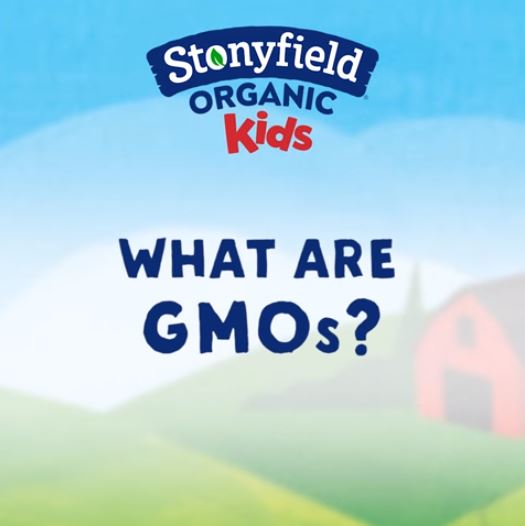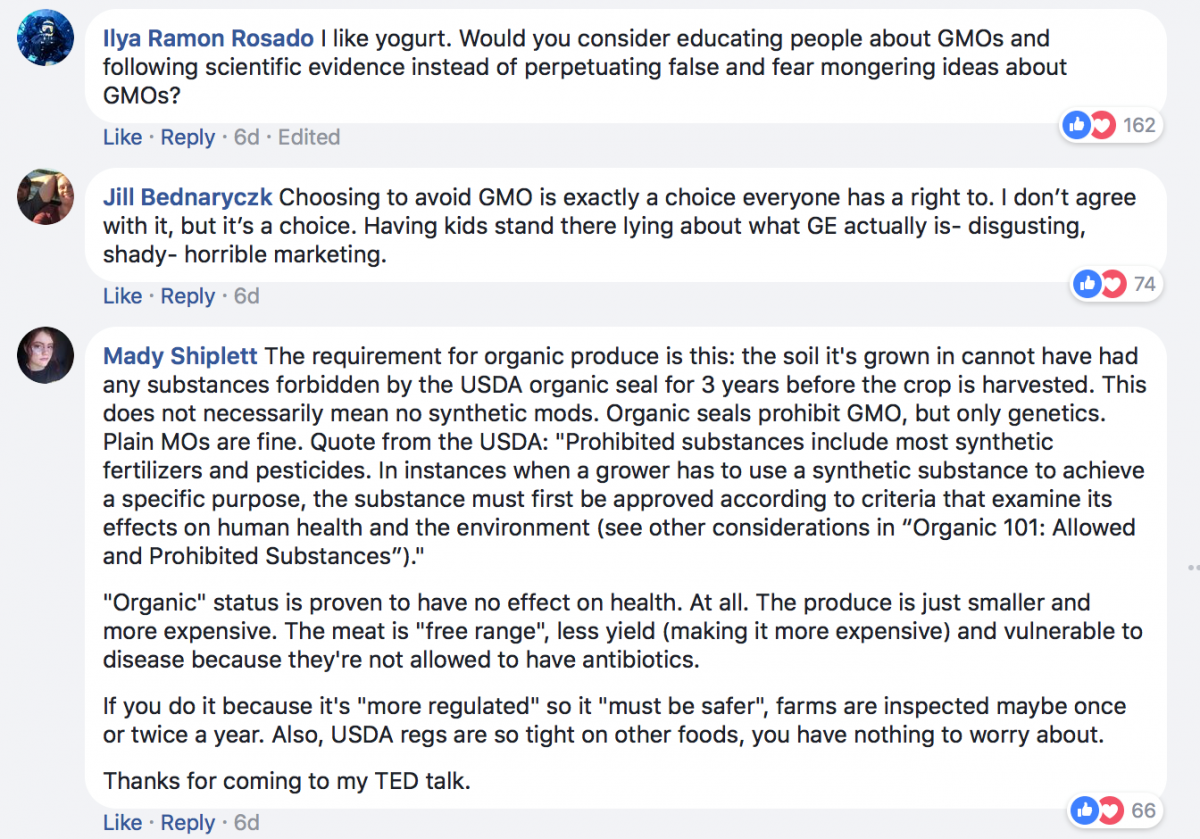How Stonyfield could’ve gotten it right
This post was originally published on GMO Answers' Medium page.

Banning questions and comments about GMOs isn’t the answer. Engaging in conversation with skeptics and answering tough questions just might be.
The uproar following Stonyfield Farm’s recent Facebook video ad featuring elementary school-aged girls perpetuating GMO myths was widespread. Within hours, hundreds of consumers, farmers and scientists condemned the brand for spreading misinformation and fearmongering.

Amid backlash, Stonyfield released a statement (which has since been taken down) clarifying its position on GMOs, but also accusing the online community of “trolling” and using “fake accounts” – deleting thousands of comments and banning many of the users who shared opposing views.
But what was intended to shutdown consumers’ voices only magnified them. Many took to their blogs and social media pages to share what happened – and more than 700 others joined the newly created, “Banned by Stonyfield” Facebook page.
And just like that, an “exciting” new ad quickly turned into a brand’s nightmare – but it didn’t have to go down like that. Here’s three things Stonyfield and other brands can takeaway from this experience.
1. Lead with science & facts.
Don’t exploit consumer knowledge gaps. GMOs are safe!
That is the overwhelming consensus of scientific experts and major scientific authorities around the world, including the World Health Organization, United Nations Food and Agriculture Organization and American Medical Association. In fact, there have been more than 1,700 studies on the safety of GMOs, hundreds of which were independently funded.
In the spring of 2016, The National Academies of Science, Engineering and Medicine (NAS) researched this very same question and concluded: yes, GMOs are safe.
Furthermore, in reference to claims about glyphosate’s toxicity – it’s important not substitute risk for hazard, as most recently covered in Slate.
Overall, GMOs enable farmers to grow more crops using less.
Over the last 20 years, GMOs have reduced pesticide applications 8.1% and helped increased crop yields by 22%.

2. Inform consumers, don’t fearmonger.
The Stonyfield video ended with the statement, “It’s important to know what’s in your food.”
That’s correct.
And consumers are interested in learning how their food is grown and raised. So rather than exploiting their knowledge gaps, food companies have an opportunity to help educate, using science-based information and facts.
If you don’t – those who are informed will, including GMO Answers. So when people hear, “They take a gene from a fish and put it into the tomato,” they’ll know it’s a myth.
3. Be open to skeptics & open dialogue.
Whether discussing organic, conventional or GMO foods, it’s important to acknowledge consumers’ concerns and communicate with fact-based, open dialogue – banning adverse, but constructive feedback isn’t the answer.
Let’s be open to joining these conversations – even the tough ones.
If you have questions or need a resource, GMO Answers is here to help you understand GMOs and make informed food choices. We can also connect you with farmers, scientists and other biotechnology experts who can answer your questions about GMOs.